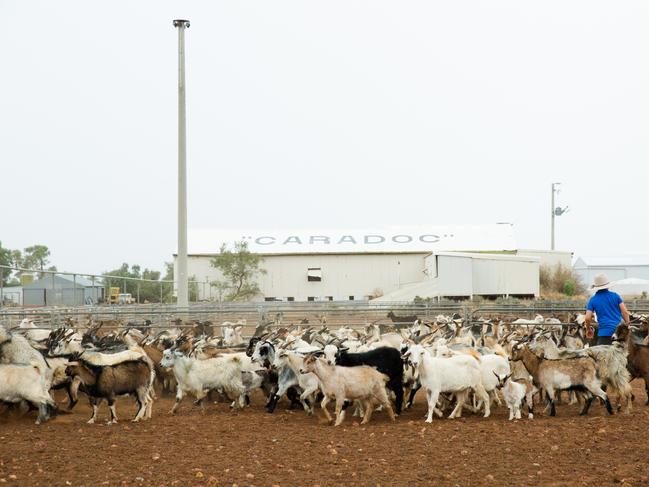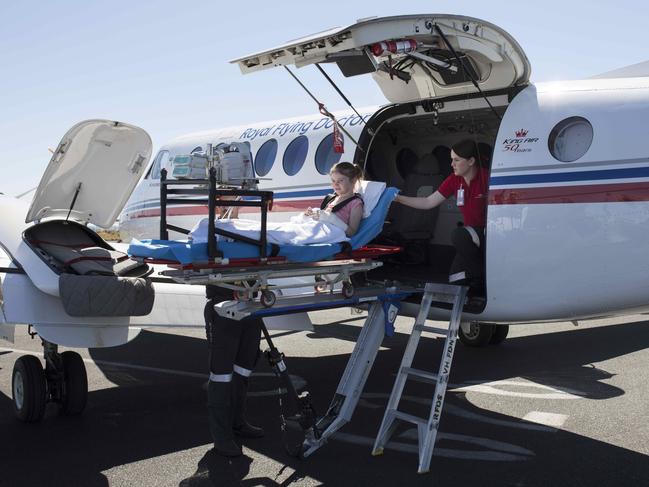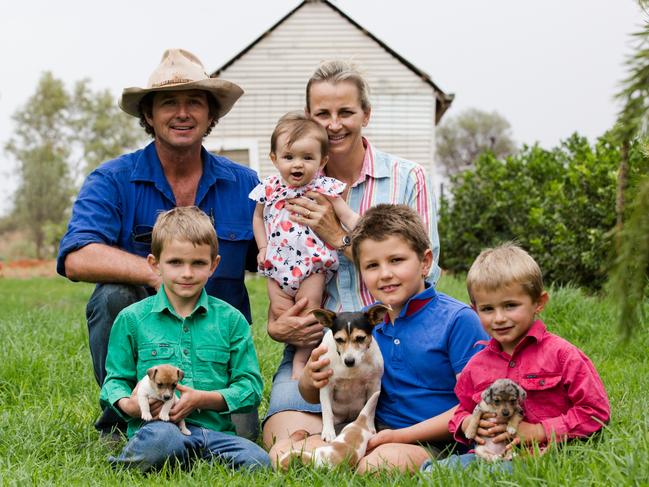Life expectancy gap, travel times spark new push to fix bush health crisis
Regional Australians die up to two decades before their city counterparts, a landmark report has found – sparking a new push to fix the rural health crisis. See the figures here.
National
Don't miss out on the headlines from National. Followed categories will be added to My News.
A health crisis in the bush cutting thousands of lives short has prompted calls for “equal access” to GPs and specialists and more funding from all levels of government to reduce preventable illness and injury.
The plight of young families and elderly people living in remote parts of Australia who are forced to drive hours for health care has been laid bare in a landmark new Best For The Bush report by the Royal Flying Doctor’s Service (RFDS).
Analysis by the RFDS found about 44,930 people in remote and very remote Australia have no access to any type of primary health care service within one hour’s drive as is recommended by the Australian Institute of Health and Welfare.
About 118,943 Australians live further than an hour away from a dentist, 208,247 have no nurse and 134,851 are not near any general mental health services.
Lack of health care access has been linked to lower life expectancy and higher rates of serious illnesses, including issues that could have been preventable with earlier intervention.

Women in very remote areas are likely to die 19 years earlier than those living in major cities, while men die on average 13.9 years earlier.
Aboriginal and Torres Strait Islander people are living on average 14 years less than non-Indigenous Australians, with the gap even wider for those in remote areas.
People living in the bush are 2.8 times more likely to be hospitalised than cities – including 2.5 times more likely to end up there for reasons that are preventable – 2.3 times as likely to die by suicide and 3.8 times more likely to die from diabetes.
Rates of kidney diseases, coronary heart disease, infectious illness and injury are all also more than twice as high.
Diabetes is the second highest cause of death in remote Australia, compared to seventh in major cities.
News Corp Australia supported the RFDS study with a $50,000 donation announced at the 2022 Bush Summit.

“News Corp Australia and The Daily Telegraph are proud to have contributed to this potentially lifesaving research that reveals a worrying and stark health gap between the city and the bush,” News Corp Australia’s Community Ambassador and chair of The Weekly Times Penny Fowler said.
“Improving health outcomes is critical to building stronger communities and creating a better Australia for all.”
The RFDS has recommended the government establish an agreed definition of “reasonable access” to primary health care that considers proximity, affordability, availability, mode of delivery, frequency and cultural appropriateness. The report also called on additional funding commitments from governments to resource primary healthcare services for rural and remote Australians.
RFDS federation executive director Frank Quinlan said all Australians should expect “reasonable access” to primary healthcare services “no matter where they live”.

In remote cattle country in NSW nearly every member of Christine Harvey’s family has been saved by the Royal Flying Doctor Service.
When an emergency situation arises, evacuation by air to hospital is the only option for the Harveys living at Caradoc Station about 300km north east of Broken Hill.
“There’s a lot of situations where you can’t move a person to take them to town for medical help,” Ms Harvey said. “We have to use the RFDS regularly. Nearly every member of my family has been saved at some point by them.”
But even for less urgent health matters, accessing proper care is not easy. Ms Harvey said it took her six months from the time her doctor recommended she get a colonoscopy to actually having the procedure due to multiple 600km return trips to Broken Hill required for references and appointments.
“That’s a long time if there is a serious issue,” she said. Ms Harvey said her community would benefit from more regular visits from specialists.
“That would save a lot of people time and maybe stop them putting off a treatment,” she said.





